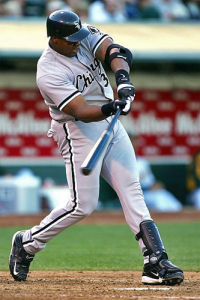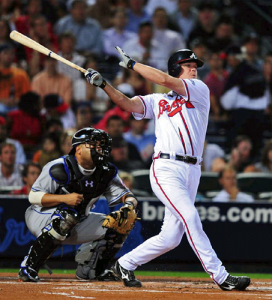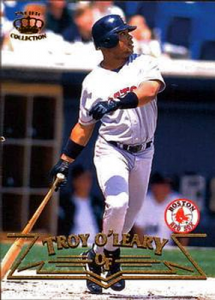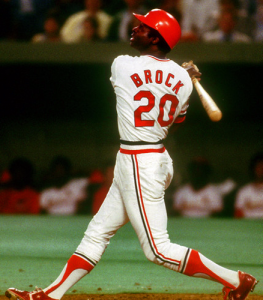It’s long been argued that right handed batters hit left handed pitching better and vice versa. While this concept may not bear out much as extremely over the course of an 8+ year career, managers have long been utilizing platoons based on hitting side as The Hardball Times expertly covered in 2009 up through modern day platoons.
As baseball has progressed into the 2000’s, managers have started getting more savvy as more numbers come in. No longer are platoons just predicated to which side a batter hits but it has transcended to the hitter’s success against a given pitcher and even a hitter’s success against the favored pitching types of the opposing pitcher. As a reaction, left handed pitchers have become more dominant in relief situations, including pitchers such as Tony Watson whom lifted LH batters to a .179 BA and Zach Britton whom limited LH batters to a .170 BA with 22 K vs. 5 BB over 88 at bats.

Some of the best major league hitters have boasted extreme splits over the course of their career, numbers that may not stand out too much but do represent a pretty major shift in hitting ability and overall ability for success at the plate.
Ken Griffey Jr. had 7,816 plate appearances against righties. He hit .291/.382/.554 with 993 walks to 1,133 strikeouts (0.876 BB:K ratio) and averaged 1 HR in 5.6% of his PA. Compare those numbers against lefties in 3,488 plate appearances where he hit just .269/.341/.503 with 319 walks to 646 strikeouts (0.493 BB:K ratio) and average 1 HR in 5.3% of his PA. While the power largely remained, Griffey struggled with maintaining his batting average and ability to get on base by drawing a walk.
Frank Thomas, another powerful slugger batting right handed, represents a player who can transition from being a superstar to being merely a great player when batting against the same pitching hand.
Thomas against LHP: 2,445 PA … 160 HR … 453 BB vs. 313 K … .322/.448/.635
Thomas against RHP: 7,630 PA … 361 HR … 1,214 BB vs. 1,084 K … .294/.410/.530
Like Ken Griffey Jr, Thomas’ biggest drops came across the board but was most effected by slugging percentage, which makes sense as a number over .570 is obscenely impressive. Thomas hit .028 lower in BA while Griffey Jr ended up hitting .022 lower. Over the course of a 650 plate appearance season, that’s a difference of 14 hits for Griffey and 18 hits for Frank Thomas.

While largely posting similar numbers (.307 vs. RHP and .293 vs. LHP) as a switch hitter, Pete Rose Sr. displayed a serious drop off in power when hitting as a right handed batter showcasing that while players can hit from both sides of the plate to take advantage of the opposite hand, it doesn’t guarantee equal success. Rose slugged a very good .419 against righties but struggled, slugging a pedestrian .384 against lefties. That’s a drop off of .035, pretty significant for a player known for his ability to make contact with the ball. Worth noting that Rose Sr.’s’ on base percentage against RHP was the exact same as his slugging against LHP.
Chipper Jones, much like Pete Rose Sr., had nearly exact numbers in BA despite being a switch hitter but his power dropped precipitously hitting right handed from .541 to a still very good .498. It’s worth noting that many call Chipper one of the best switch hitters of all-time, largely behind the fact that he had prodigious power from both sides of the plate as a hitter.

While powerful sluggers tend to keep their abilities against both types of pitchers, the real impact of the platoon splits comes in the form of the middle to lower tier baseball hitters. Players who may accumulate 120-150 hits in a season or may only hit 15-20 home runs with a .270-.280 batting average. Omar Vizquel, a longtime fixture in the infield for the Cleveland Indians is a prime example. As yet another switch hitter, he was solid as a left handed bat in the lineup hitting .279/.345/.359 over the course of his career while being known more for his fielding prowess. Unfortunately as a hitter from the right side, he turned into a below average hitter with a .253/.312/.334 line and a career OPS+ (normalized for his Splits compared to his Career OPS+) of just 88 in comparison to 105 as a LH hitter.
Switch hitting Maury Wills, known for his base thievery on the base paths, showed a rather interesting split as he was a far better hitter for average from the left side: .286/.335/.325 but slugged with far more power from the right side: .268/.318/.343.
Despite the constant listing of switch hitters in this article thus far, it is a growing trend in modern day baseball as players try to avoid sticking themselves into platoon roles and ensure more playing time despite ineffectiveness from one side of the plate compared to the other. As of 2010, 15% of hitters, courtesy of Tim Kurkjian’s linked article, were switch hitters and that number has likely risen since then.
Troy O’Leary, a left handed slugger spent most of his time with the Boston Red Sox and showed a great ability to pound RHP but struggled more against lefties, losing nearly all of his power. Against RHP he hit .277/.334/.467 compared to just .265/.325/.380 against lefties. As a result, O’Leary was mostly a platoon hitter inserted in lineups against RHP but managed to parlay that skill set into an 11 year career including a stretch with the Red Sox as a key starter from 1996 through 2001.

Wade Boggs, one of the best hitters of the 1980s and 1990s, had an interestingly extreme split while being a left handed hitter. Boggs pounded righties to the tune of a crazy .341/.433/.466 line often taking advantage of Fenway Park’s Green Monster to line drive doubles off of. Yet against lefties he struggled, hitting a still solid .297/.372/.389 but his power dropped off dramatically by .077.
Lou Brock, a star of the 1960’s and 1970’s for the St. Louis Cardinals demonstrated an equally extreme platoon split while hitting left handed. Like Boggs, he would pound right handed pitchers to the tune of a .306/.359/.431 line and an OPS+ of 110. Against RHP he struggled mightily hitting just .264/.308/.367 with a 79 OPS+.

Finally we’ll look at a few base stealing thiefs of the 1980’s. Vince Coleman mostly made his name with the St. Louis Cardinals in the early 1980’s, largely stealing 90+ bases a season before continuing his career with the New York Mets and Kansas City Royals. Interestingly enough, he was also a switch hitter. Much like the previously mentioned Maury Wills, Coleman represented a unique split. Against righties he hit .270/.330/.333 possibly showcasing he was a natural left handed hitter but against lefties he hit .253/.312/.367 with a far better ability to slug for power.
Despite the interruption of football, Deion Sanders showed a knack for baseball often hitting over .270 in his career with an ability to hit for power as well, albeit not over the fences. As a left handed hitter, “Prime Time” mashed righties to the tune of a .270/.326/.409 career line while struggling against RHP with an absolutely abysmal line of .237/.293/.333.

